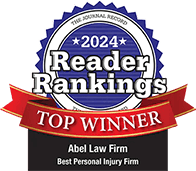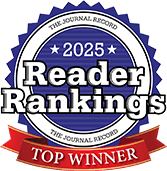If a medication has caused you or a loved one serious harm, you may have grounds to pursue a dangerous pharmaceutical product claim. At Abel Law Firm, our Tulsa dangerous pharmaceutical product lawyers handle cases involving defective medications, inadequate warnings, and pharmaceutical negligence. With almost 50 years of experience in product liability litigation, we’ve recovered over $550 million for injured clients across Oklahoma. T. Luke Abel, recognized as Lawyer of the Year for Product Liability by Best Lawyers in America, leads our pharmaceutical liability practice.
Disclaimer: Past results do not guarantee future outcomes. Each case is unique and depends on specific facts and circumstances.
What Is a Dangerous Pharmaceutical Product Claim?
A dangerous pharmaceutical product claim falls under product liability law. This law holds manufacturers, distributors, and sellers responsible for injuries caused by defective or unreasonably dangerous products. When a medication causes harm, you may pursue compensation from the pharmaceutical company that produced it, the pharmacy that dispensed it, or other parties in the supply chain.
Pharmaceutical product liability differs from medical malpractice. Medical malpractice involves negligence by a healthcare provider. Examples include prescribing the wrong dosage or failing to monitor for side effects. Pharmaceutical liability focuses on defects in the medication itself. It also addresses failures by the manufacturer to warn about known risks.
Under Oklahoma product liability law (Title 76, Torts), manufacturers bear responsibility for injuries resulting from defective products. A medication qualifies as defective if it contains a manufacturing flaw, has an inherently dangerous design, or lacks adequate warnings about known risks. Our Tulsa dangerous pharmaceutical product lawyers investigate each case thoroughly to identify which party bears liability.
Types of Pharmaceutical Defects We Handle
Pharmaceutical defects fall into three primary categories. Each creates different legal pathways for recovery.
Manufacturing Defects occur when the production process goes wrong. A batch of medication might become contaminated or contain incorrect dosages. Degradation during storage or transport can also cause defects. These defects mean the medication differs from the manufacturer’s intended design. They pose unexpected dangers to consumers. Learn more about manufacturing defects in product liability cases.
Design Defects exist when the medication’s formulation creates unreasonable risks. This happens even when manufactured correctly. A drug might have an inherently dangerous chemical composition. It may cause serious side effects in a significant portion of users. The manufacturer knew or should have known about these risks before releasing the product. Our Tulsa product liability attorneys investigate design defects thoroughly.
Warning and Labeling Defects occur when manufacturers fail to disclose known risks. They may provide inadequate instructions for safe use. Pharmaceutical companies must inform healthcare providers and patients about potential side effects, drug interactions, and contraindications. When they conceal or downplay these dangers, they create liability.
How These Defects Cause Harm
Each defect type produces different injuries. Manufacturing defects might cause unexpected allergic reactions or organ damage. Design defects often result in cardiovascular problems, liver failure, gastrointestinal bleeding, or addiction. Warning defects lead to harm when patients take medications without understanding the risks. This includes combining drugs that interact dangerously or using medications despite contraindications.
Common Dangerous Medications and Injuries
Our firm has handled cases involving numerous medications that caused serious injuries. Vioxx, a pain reliever, was withdrawn from the market. Evidence linked it to heart attacks and strokes. Baycol, a cholesterol medication, caused severe muscle breakdown. Propulsid, used for digestive issues, triggered dangerous heart rhythm problems. Fentanyl patches, prescribed for chronic pain, led to overdoses and addiction. Clients have pursued litigation against Actos and Lipitor over cardiovascular and liver complications.
Injuries from dangerous medications range from temporary discomfort to permanent disability or death. Clients have suffered cardiovascular damage requiring surgery. Others experienced liver failure necessitating transplants. Additional injuries include gastrointestinal bleeding, kidney damage, and severe allergic reactions. Some medications caused addiction or withdrawal complications that destroyed lives. See our case results and settlements to learn how we’ve helped injured clients.
The FDA classifies drug recalls into three categories. Class I recalls involve serious health hazards or death. The Class II recalls address potential health problems that may not cause serious consequences. Class III recalls involve medications unlikely to cause adverse health effects. Understanding these classifications helps explain why certain medications were pulled from shelves. It also shows why manufacturers should have known about dangers earlier.
Recent Pharmaceutical Litigation Trends
Mass tort litigation involving dangerous drugs continues to grow. Recent cases have targeted medications for diabetes, weight loss, and autoimmune conditions. Class action lawsuits allow multiple injured parties to pursue claims collectively. This increases pressure on manufacturers to settle. Individual lawsuits also succeed when clients can demonstrate direct causation between a specific medication and their injuries.
How We Prove Pharmaceutical Liability
Proving pharmaceutical liability requires establishing four key elements. The medication must contain a defect. The defect must have existed when the product left the manufacturer’s control. The defect must have caused your injury. You must have suffered damages.
Establishing the Defect involves reviewing manufacturing records, comparing the medication to industry standards, consulting expert witnesses, and obtaining internal company documents, FDA communications, and clinical trial data. These materials often reveal that manufacturers knew about dangers but failed to disclose them.
Proving Causation requires medical evidence linking the medication to your specific injury. Your medical records strengthen your case. Expert testimony from physicians establishes the connection. Scientific literature supports the link. We work with medical experts who can explain how the medication caused your condition. Understanding how comparative negligence affects your claim is also important in pharmaceutical cases.
Demonstrating Manufacturer Negligence shows that the company failed to exercise reasonable care. This might involve proving they ignored warning signs. They may have suppressed research or prioritized profits over safety. Internal emails and corporate documents frequently reveal negligent decision-making.
Evidence Collection includes medical records, pharmacy records, the medication’s packaging and labeling, expert reports, and company documents. We conduct thorough investigations to uncover all relevant evidence. Learn about what documents you need for your personal injury case.
Settlement vs. Trial Considerations depend on case strength, available evidence, and your preferences. Many pharmaceutical cases settle before trial. This allows faster compensation. Others proceed to trial when settlement offers prove inadequate. Our Tulsa personal injury attorneys prepare every case for trial while pursuing favorable settlements. Understand the differences between settling vs. going to court.
What Damages Can You Recover?
Pharmaceutical injury victims can recover both economic and non-economic damages.
Medical Expenses include all past and future healthcare costs related to your injury. This covers emergency treatment, hospitalization, surgery, medications, physical therapy, and ongoing medical monitoring. We calculate lifetime medical needs to ensure full compensation.
Lost Wages and Earning Capacity compensate for income lost during recovery. They also address reduced earning potential if your injury prevents you from working at your previous capacity. We document lost time and calculate future income loss based on your career trajectory.
Pain and Suffering addresses physical pain, emotional distress, and reduced quality of life. These non-economic damages recognize the profound impact serious medication injuries have on daily living.
Punitive Damages may apply when manufacturers acted with gross negligence or intentional misconduct. These damages punish wrongdoing and deter future dangerous behavior. Learn about compensatory vs. punitive damages from our available resources.
Class Action vs. Individual Claims offer different advantages. Class actions allow many injured parties to pursue claims collectively. This reduces individual costs. Individual lawsuits may result in higher compensation when your case is particularly strong or your damages are substantial.
The Statute of Limitations in Oklahoma
Oklahoma law provides a two-year deadline to file a dangerous pharmaceutical product claim. The clock starts from the date you discovered or reasonably should have discovered the injury. This deadline is critical. Missing it bars your claim permanently.
Discovery Rule Exceptions may extend this deadline in certain circumstances. If you didn’t know the medication caused your injury, the clock might start when you discovered the connection. It doesn’t start when you take the medication. We evaluate your specific timeline to determine when your deadline falls.
Why Timing Matters cannot be overstated. Witnesses’ memories fade, evidence disappears, and pharmaceutical companies destroy documents. Acting quickly preserves crucial evidence and protects your legal rights.
How to Document Your Injury Timeline
Begin documenting immediately. Gather all pharmacy records showing when you filled prescriptions. Collect medical records from every healthcare provider who treated your condition. Photograph any visible injuries. Write down symptoms and when they appeared. Save all medication packaging and inserts. Record conversations with healthcare providers about your symptoms. This documentation strengthens your case significantly.
Why You Need an Experienced Pharmaceutical Liability Attorney
Pharmaceutical companies employ teams of lawyers and experts to defend against claims. You need equally experienced representation to level the playing field.
Our attorneys conduct thorough investigations into manufacturing processes, clinical trials, and company communications. We identify defects that manufacturers tried to conceal, coordinate with medical experts who explain complex pharmaceutical science to judges and juries, and negotiate with pharmaceutical companies and their insurers from a position of strength. We know the value of your case and refuse inadequate offers.
Luke Abel, recognized as Lawyer of the Year for Product Liability by Best Lawyers in America, leads our pharmaceutical liability practice. Kelly Bishop, a Super Lawyer for 13 consecutive years, brings decades of experience to complex product liability cases. Our team includes multiple Super Lawyers and Top 100 Trial Lawyers recognized nationally for excellence. Learn more about why you should choose us.
We handle pharmaceutical cases on a contingency fee basis. You pay no upfront costs. We recover fees only if we win your case or secure a settlement. This arrangement aligns our interests with yours. We succeed only when you receive compensation. Discover how much a personal injury lawyer costs from our available resources.
Frequently Asked Questions
What should I do if I suspect a medication caused my injury?
Contact a pharmaceutical liability attorney immediately. Preserve all evidence, including the medication bottle, pharmacy records, and medical documentation. Avoid discussing your case on social media. Write down your symptoms and timeline while details are fresh. The sooner you act, the stronger your case becomes. Learn about why posting on social media after an accident can hurt your case.
Can I file a claim if the drug was FDA-approved?
Yes. FDA approval does not shield manufacturers from liability. The FDA approves medications based on available evidence at the time of approval. If manufacturers later discover dangers or concealed information during the approval process, liability still exists. Many dangerous drugs received FDA approval before their risks became apparent.
How much does it cost to hire a pharmaceutical liability lawyer?
We work on contingency, so you pay nothing upfront. We cover investigation costs, expert fees, and litigation expenses. If we don’t win, you owe us nothing. This arrangement ensures injured people can afford quality legal representation regardless of financial circumstances. Understand the advantages of working with a personal injury lawyer.
What evidence do I need to support my claim?
Medical records showing your diagnosis and treatment strengthen your case. Pharmacy records proving you took the medication are critical. Expert medical testimony linking the medication to your injury strengthens your case. Company documents revealing knowledge of dangers are powerful evidence. We investigate thoroughly to gather all available evidence supporting your claim.
Call Abel Law Firm Today
If a dangerous medication has harmed you or a loved one, don’t wait. Oklahoma’s two-year statute of limitations deadline approaches quickly. Contact Abel Law Firm for a free consultation with our Tulsa dangerous pharmaceutical product attorneys. We’ll evaluate your case, explain your legal options, and pursue the compensation you deserve.
Call us today at (918) 777-7046 or complete our online contact form to schedule your free consultation. We serve clients throughout Oklahoma and handle cases on a contingency fee basis. You pay nothing unless we win. Visit our Tulsa office page to learn more about serving your community.



